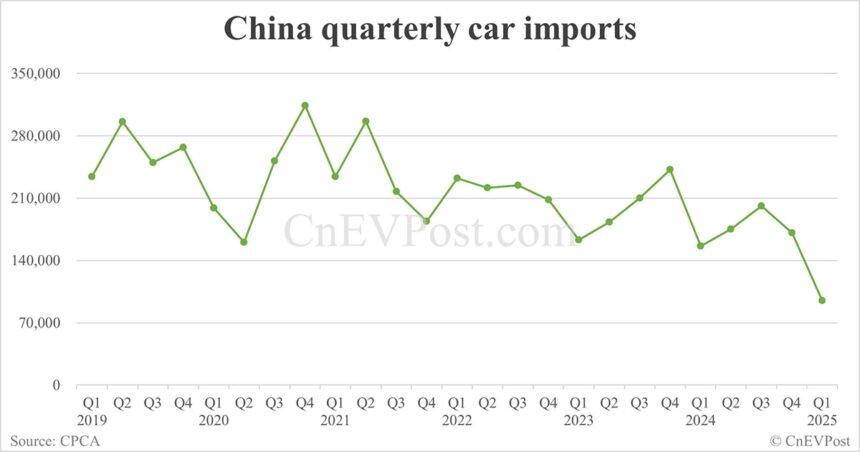China’s auto imports experienced a significant decline in the first quarter of this year, with a sharp year-on-year decrease of 39 percent. This decline is attributed to the increasingly complex international environment and the rise of local Chinese auto brands in the market.
According to a report by Cui Dongshu, the secretary-general of the China Passenger Car Association, China imported a total of 95,000 vehicles in the first quarter, marking the lowest quarterly figure in recent years. Among the imports, Japan emerged as the largest contributor with 30,517 vehicles, followed by Germany at 23,695.
Notably, imports from the US saw a substantial decline of 66 percent year-on-year, with only 8,870 vehicles imported in the first quarter. The ongoing trade tensions between the US and China have further impacted this trend, as seen with Tesla’s decision to stop taking orders for imported Model S and Model X cars in China.
In contrast, new energy vehicles (NEVs) accounted for a mere 2.6 percent of China’s total vehicle imports in the first quarter, highlighting the dominance of gasoline-powered vehicles in the market. Despite efforts to promote electric vehicles, gasoline cars continue to lead the import market.
In March alone, China imported 39,000 vehicles, representing a 27 percent decrease compared to the same period last year. Japan remained the top exporter in March, followed by Germany and Slovakia.
As China’s auto industry undergoes a shift towards electrification, there has been a noticeable change in market demand, particularly with a declining interest in gasoline vehicles. This shift has also impacted the structure of imported vehicles, with a significant drop in demand for gasoline imports.
The report also highlighted the rapid decline in Chinese imports from the US over the years, indicating a shift in sourcing strategies amidst changing international relations. To navigate these complexities, Cui emphasized the need for China to develop more sophisticated import models to sustain a reasonable level of imported vehicles.
Overall, the dynamics of China’s auto import market reflect the evolving landscape of the global automotive industry, with implications for both domestic and international players. As the industry continues to evolve, adaptation to changing trends and market demands will be crucial for sustained growth and competitiveness.







